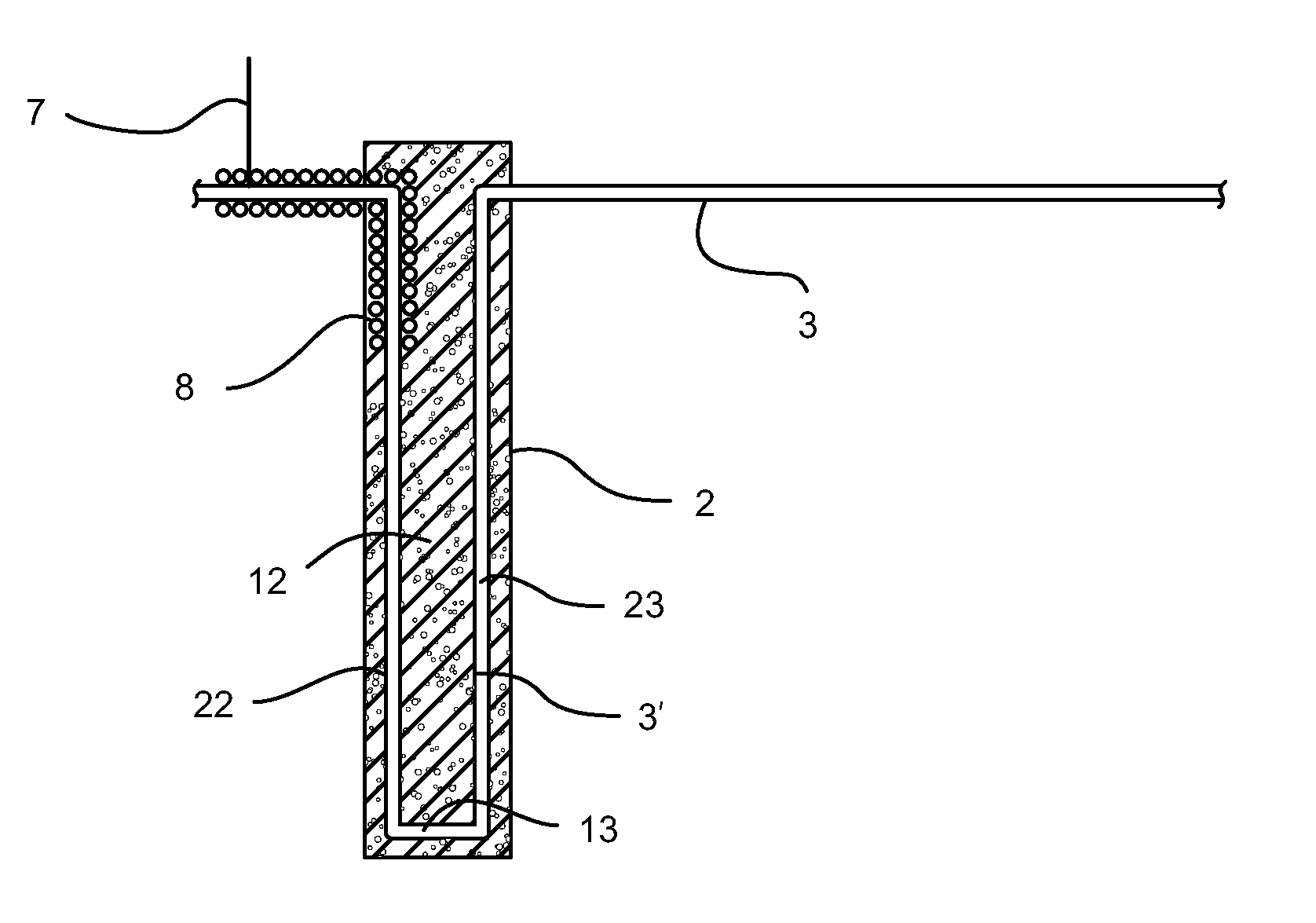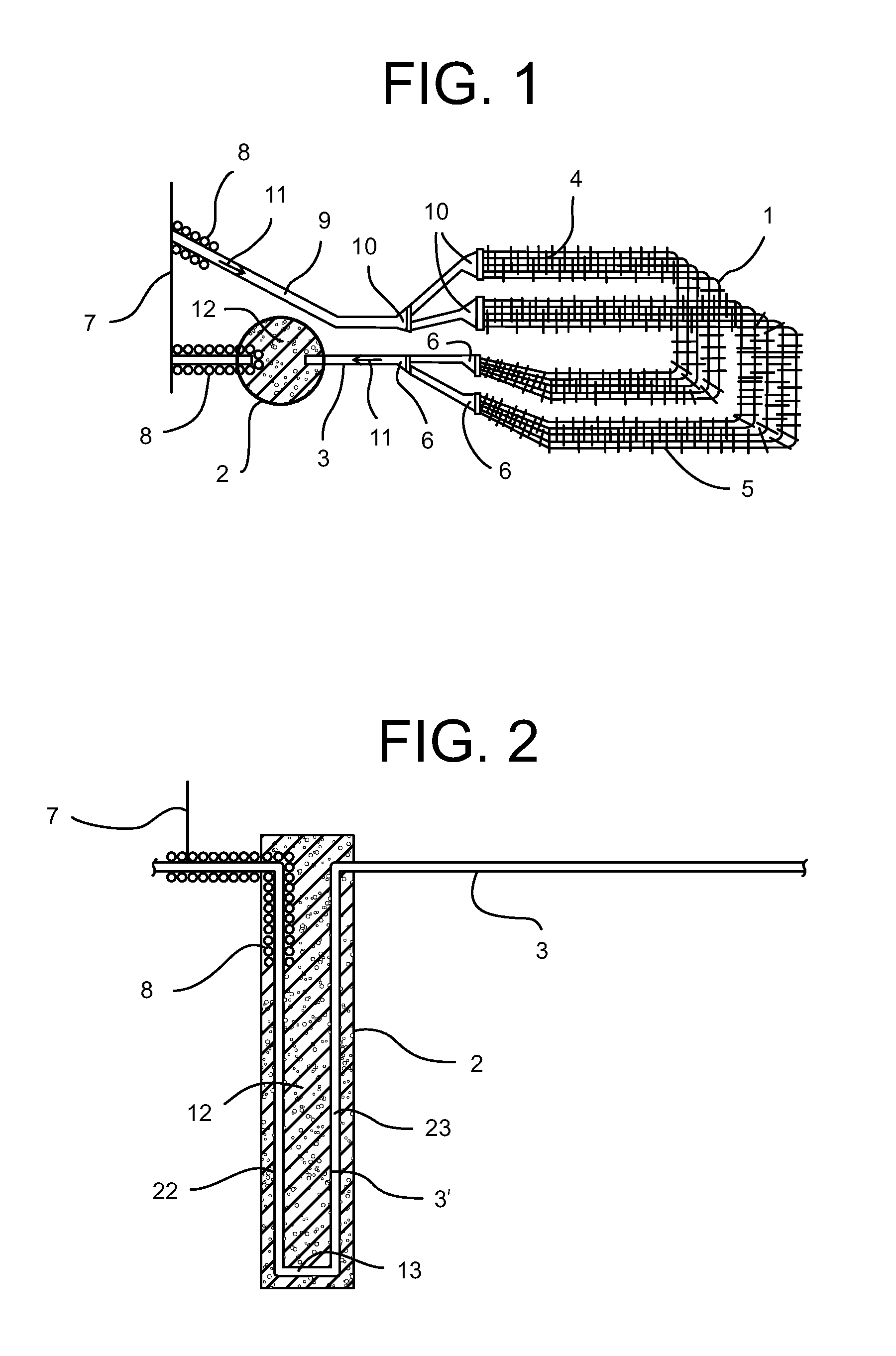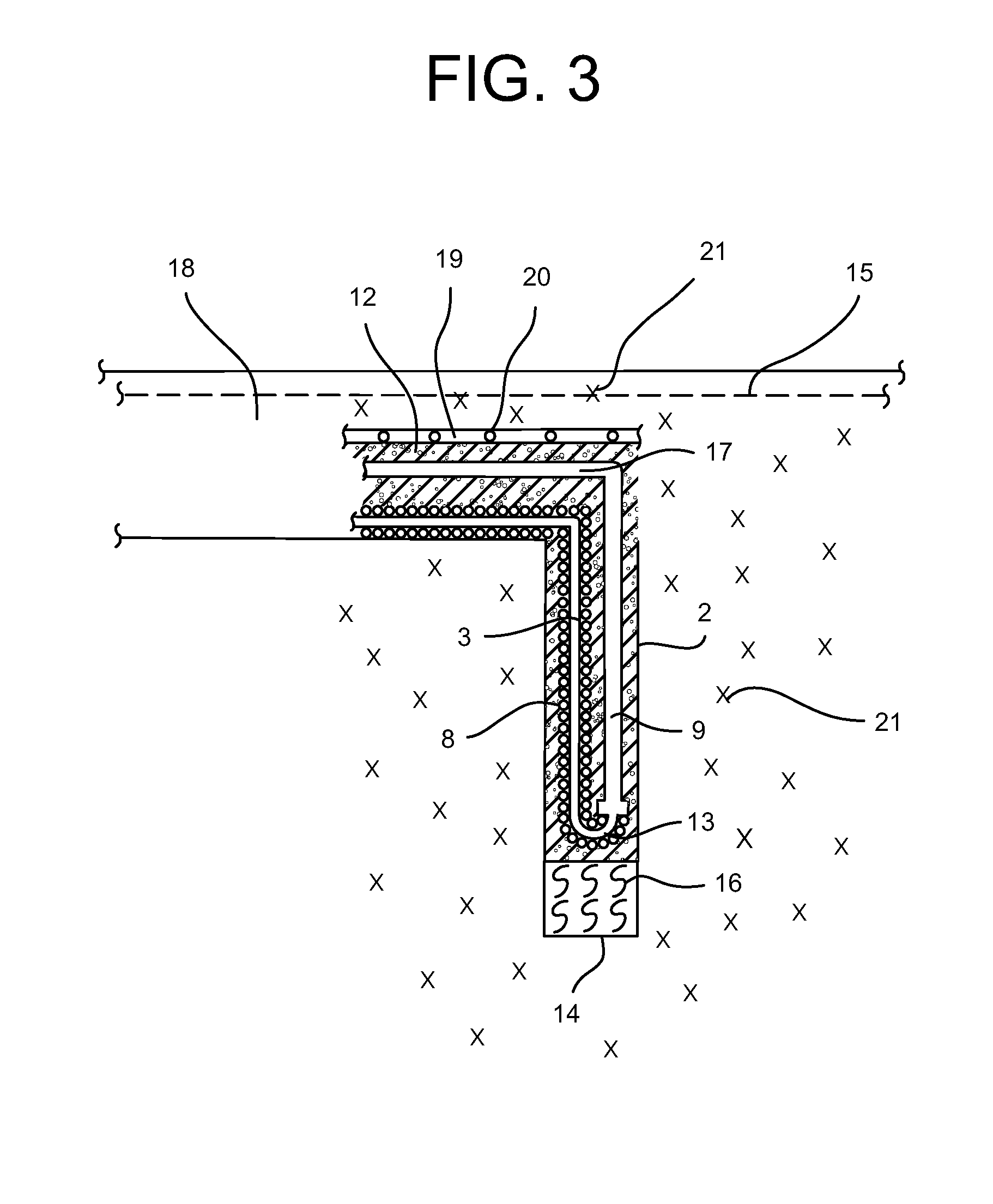Direct exchange geothermal heating/cooling system sub-surface tubing installation with supplemental sub-surface tubing configuration
a geothermal heating/cooling system and sub-surface tubing technology, applied in the direction of domestic cooling equipment, heat pumps, lighting and heating equipment, etc., can solve the problems of large surface area, easy overstress of pit style systems, and occupy most all available yard space, so as to increase the overall system operational efficiency
- Summary
- Abstract
- Description
- Claims
- Application Information
AI Technical Summary
Benefits of technology
Problems solved by technology
Method used
Image
Examples
Embodiment Construction
[0032]The following detailed description is of the best presently contemplated mode of carrying out the invention. The description is not intended in a limiting sense, and is made solely for the purpose of illustrating the general principles of the invention. The various features and advantages of the present invention may be more readily understood with reference to the following detailed description taken in conjunction with the accompanying drawings.
[0033]One embodiment of the invention is shown in FIG. 1, not drawn to scale, which is a top view of a horizontally inclined DX geothermal heat exchange pit system 1, in conjunction with a vertically inclined supplemental well 2 installation for the single, primary, liquid refrigerant transport line 3. Typically, depending on the size of the DX system compressor (not shown herein, as same is well understood by those skilled in the art) the primary liquid line 3 is a three-eighth inch O.D, plus or minus 20%, for a one to two and one-ha...
PUM
 Login to View More
Login to View More Abstract
Description
Claims
Application Information
 Login to View More
Login to View More - R&D
- Intellectual Property
- Life Sciences
- Materials
- Tech Scout
- Unparalleled Data Quality
- Higher Quality Content
- 60% Fewer Hallucinations
Browse by: Latest US Patents, China's latest patents, Technical Efficacy Thesaurus, Application Domain, Technology Topic, Popular Technical Reports.
© 2025 PatSnap. All rights reserved.Legal|Privacy policy|Modern Slavery Act Transparency Statement|Sitemap|About US| Contact US: help@patsnap.com



